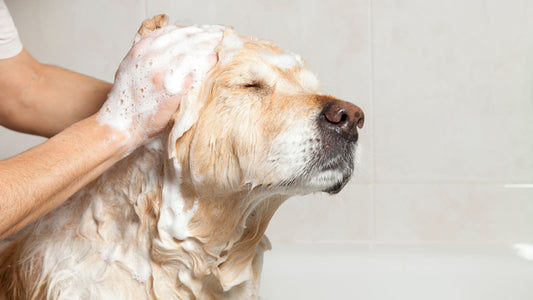Allergy dogs, how do you take care of them?
If you have a allergic dog You'll know how desperate it can be, both for seeing your pet suffer and for not knowing well how to treat allergy in your dog.
For some people it can be really confusing to wear a relationship with an allergy dog.

Allergy symptoms in dogs
When a person has any allergy, the human body expresses it through sneezing, weeping eyes, and itching.
In the case of dogs may develop other symptoms:
- Fever
- High skin sensitivity
- And even not show any.
The allergies in dogs can be confused with a general discomfortAnd you didn't even know that the dog is allergic.
Signs that your dog has an allergic reaction
Allergies can manifest in different ways, some are more evident than others:
- The itching is the characteristic sign of an allergyFollow this, the dog will show increase in scratching, licking your feet, and shaking.
- The hair drop already marks a severe allergy reaction, as well as redness of the skin, rashes, and in some cases, ear problems.
- Other diseases, with allergy-like symptoms, for example parasites (baccora, fleas, ticks), infections from bacteria, hormonal irregularities, or autoimmune problems, are the first diseases to be discarded in medical evaluation.
If your pet shows any of the above signs, it is important to look for a veterinary professional that you can make a detailed assessment. It may be necessary to do certain medical tests to detect the cause of the reaction.
If after evaluation and medical results, it is concluded that the dog has an allergy, specific tests can be done to identify what produces that allergic reaction.
For this, you can test food for several weeks, to rule out that the origin is from intake of something that is not suitable for dog consumption. The veterinarian will be able to help you know how to do this investigation. During this time your dog may keep a special diet that does not involve processed or preservative foods.
Treatment or advice to treat an allergic dog

If you've already detected the detonator of your pet allergy, you can be calmer already. However, in some cases treating allergy can be more complicated.
When you have a allergic dog is normal for exposure to be reduced from the pet to avoid contagion or disturbances in your skin by outside agents.
What should be considered:
- Flea control is much stricter and therefore contact with other dogs that can catch your hairy should be avoided.
- Avoid your dog ingesting food remains. We have to have more supervision to see where our colleague is putting his mouth in.
- During certain seasons, your dog may react worse. Pollen-filled seasons can alter your allergic reactions. During these days avoid frequenting sites that may be filled with pollen or reduce the time of the ride.
- Keep your dog's bed clean. Try to wash your dog's bed, blankets or blankets as often as possible. You go through the vacuum cleaner regularly all over the home to remove mites and dust that can affect your dog.
- Your dog's bath time may be the hardest task of all. The bathing of an allergic dog requires patience, technique and products or shampoo for hypoallergenic dogs.
- The best remedy to treat a dog's allergyDon't despair at any time. Remember that the best thing you can bring to your pet is love and calm at all times. The stress can always make an allergy reaction worse.
Finally, the most important thing is to go to a veterinarian, to do the necessary tests to know if your dog is allergic and use the special products for dogs with sensitive skin.



